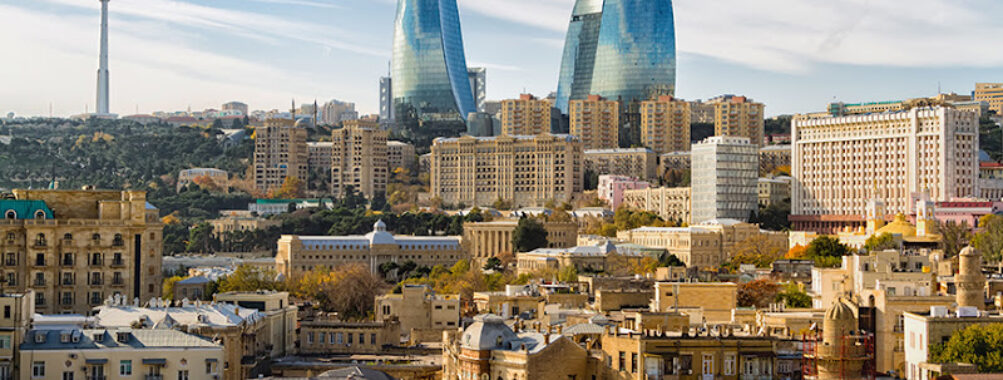
Baku
Table of Contents
Description
Baku is the kind of city that catches you off guard in the best way possible. On one hand, you’ve got the ancient walled Old City, with its cobbled streets that seem to whisper stories from centuries ago. The Palace of the Shirvanshahs feels like stepping into a chapter of history you didn’t know you needed, while the Maiden Tower stands there—mysterious, a little stubborn, like it’s daring you to figure it out. And then, just a short stroll away, the skyline suddenly flips into the future with the sleek curves of the Heydar Aliyev Center and the glowing silhouettes of the Flame Towers. It’s not a city that hides its contrasts; it wears them proudly. You’ll hear the call to prayer in the morning and find rooftop bars serving craft cocktails by night. There’s a certain honesty to Baku—gritty in places, polished in others—that makes it feel more real than some overly manicured destinations. And yes, the Caspian Sea is right there, sometimes calm and glassy, sometimes rough and moody, like it’s got its own personality to match the city.
Key Features
- UNESCO-listed Old City (Icherisheher) with medieval architecture and winding alleyways
- Palace of the Shirvanshahs, a 15th-century royal complex rich with historical detail
- Maiden Tower, offering panoramic views and a touch of legend
- Heydar Aliyev Center, a futuristic architectural masterpiece by Zaha Hadid
- Flame Towers with nightly LED light shows visible across the city
- Seaside promenade (Baku Boulevard) perfect for evening walks
- Blend of Azerbaijani, Persian, and Russian cultural influences
- Thriving café culture and diverse street food scene
Best Time to Visit
If you ask locals, they’ll tell you spring and autumn are when Baku feels “just right.” From late April to early June, the air is warm without being heavy, and the city’s parks are in full bloom. September and October bring crisp evenings, ideal for wandering the Old City without breaking a sweat. Summer? Well, it can be hot—really hot—and the Caspian breeze doesn’t always save you. But if you’re the type who loves long, golden evenings and doesn’t mind the heat, July has its charm. Winter is quieter, with fewer tourists and a slower pace, though the wind off the sea can be sharp enough to make you rethink your scarf choices.
How to Get There
Baku is surprisingly well connected for a city that still feels a bit off the beaten path. The Heydar Aliyev International Airport is the main gateway, with direct flights from major cities in Europe, the Middle East, and parts of Asia. From the airport, it’s about a 25–30 minute drive into the city center—taxis are plentiful, and ride-hailing apps work well here. If you’re already in the region, overnight trains from Tbilisi or buses from southern Russia are an option, though they’re more of an adventure than a convenience. I once took the train from Tbilisi—let’s just say it was less about speed and more about the experience (and the endless tea offered by fellow passengers).
Tips for Visiting
First thing: bring layers. Baku’s weather can turn on a dime, especially with that famous wind—locals even have a name for it, the “Khazri.” Comfortable shoes are a must; the Old City’s stone streets are charming but unforgiving on the ankles. Don’t be shy about trying local dishes like plov or qutab from small family-run spots—they’re often better than the fancy restaurants. If you’re into photography, evenings are magic here: the Flame Towers light up, the sea reflects the city lights, and the whole place hums with energy. Oh, and carry some cash; while most places take cards, the little tea houses and market stalls still prefer the old-fashioned way. Finally, give yourself time. Baku isn’t a city you “do” in a day—it’s one you slowly get to know, like a new friend who keeps surprising you every time you meet.
Location
Places to Stay Near Baku
Find and Book a Tour
Explore More Travel Guides
No reviews found! Be the first to review!